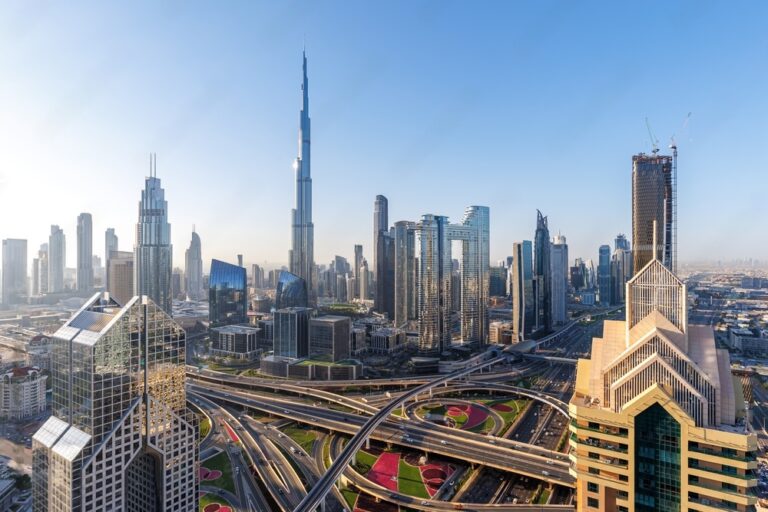Engineering Marvels: The Hidden Stories Behind Iconic Structures

In the world of architecture and engineering, certain structures stand as testaments to human ingenuity, perseverance, and vision. From the towering heights of the Burj Khalifa to the majestic span of the Golden Gate Bridge, these engineering marvels not only captivate our imagination but also tell fascinating tales of innovation, determination, and sometimes, sheer audacity. Let’s delve into the challenges faced during the construction of these famous landmarks and unravel the engineering innovations that made them possible.
Burj Khalifa: As the tallest building in the world, the Burj Khalifa in Dubai is a symbol of modern engineering prowess. However, its construction was no small feat. Engineers had to contend with challenges such as extreme temperatures, high winds, and the logistical nightmare of transporting materials to dizzying heights. The tower’s design incorporates a buttressed core and a Y-shaped floor plan to provide stability against the forces of nature.
Golden Gate Bridge: Stretching across the Golden Gate Strait in San Francisco, the Golden Gate Bridge is not only an architectural masterpiece but also a marvel of engineering. During its construction in the 1930s, workers faced treacherous conditions, including dense fog, strong ocean currents, and frequent high winds. The bridge’s innovative suspension design, anchored by massive cables and towers, allowed it to withstand these challenges and become an enduring symbol of American ingenuity.
Great Wall of China: Spanning over 13,000 miles and dating back more than two millennia, the Great Wall of China is one of the most iconic engineering achievements in history. Constructed primarily to defend against invasions, the wall required immense manpower and resources to build. Engineers employed innovative techniques such as rammed earth and brickwork to create a formidable barrier that still stands today as a testament to ancient engineering prowess.
But what exactly defines an engineering marvel? At its core, an engineering marvel is more than just a grand structure—it represents human creativity, problem-solving, and technological advancement. It pushes the boundaries of what is possible, inspiring awe and admiration for generations to come.
To further illustrate the concept of engineering marvels, let’s take a look at seven wonders of the engineering world:
Panama Canal: This 51-mile waterway, connecting the Atlantic and Pacific Oceans, revolutionized global trade by providing a shortcut for ships traveling between the two hemispheres. Its construction in the early 20th century involved overcoming immense geological challenges, including dense jungles, treacherous terrain, and the formidable Culebra Cut. Engineers devised innovative solutions such as locks and dams to tame the wild landscape and create one of the most important waterways in the world.
Channel Tunnel: Also known as the “Chunnel,” this underwater tunnel linking England and France beneath the English Channel is a triumph of modern engineering. Stretching over 31 miles, the tunnel required groundbreaking tunneling techniques and specialized equipment to excavate through layers of rock and clay beneath the seabed. Its completion in 1994 revolutionized travel between the two countries, reducing journey times and fostering closer economic and cultural ties.
Hoover Dam: Rising from the depths of the Black Canyon on the Colorado River, the Hoover Dam is a marvel of engineering and a symbol of American resilience during the Great Depression. Built in the 1930s, the dam’s construction involved diverting the mighty Colorado River, pouring millions of cubic yards of concrete, and erecting massive hydroelectric turbines. Its completion not only provided much-needed jobs but also generated electricity and provided water for irrigation, transforming the arid landscapes of the American Southwest.
Tokyo Skytree: As one of the tallest structures in the world, the Tokyo Skytree dominates the skyline of Japan’s capital city. Standing at over 2,000 feet tall, the tower serves as a broadcasting antenna and observation deck, offering panoramic views of Tokyo and beyond. Its innovative design incorporates seismic-resistant features to withstand earthquakes, a common occurrence in the region. The Skytree represents a fusion of traditional Japanese craftsmanship and cutting-edge engineering technology.
Millau Viaduct: Spanning the Tarn Valley in southern France, the Millau Viaduct is the tallest bridge in the world, standing over 1,100 feet above the valley floor. Its elegant design, featuring slender piers and a graceful deck, belies the engineering challenges involved in its construction. Engineers had to contend with strong winds, variable temperatures, and the need to minimize environmental impact on the picturesque landscape below. The viaduct’s innovative use of precast concrete segments and cable-stayed construction techniques allowed for rapid assembly and minimal disruption to the surrounding area.
Palm Islands: Located off the coast of Dubai, the Palm Islands are artificial archipelagos constructed in the shape of palm trees. These man-made marvels required dredging millions of cubic meters of sand and rock from the seabed and carefully shaping them into intricate palm fronds. Engineers devised innovative methods to stabilize the islands and protect them from erosion and wave action, including the use of geotextile membranes and rock revetments. The Palm Islands stand as a testament to human ambition and the willingness to reshape the natural world on a grand scale.
Three Gorges Dam: Situated on the Yangtze River in China, the Three Gorges Dam is the largest hydroelectric power station in the world, generating enough electricity to power millions of homes. Its construction involved relocating over a million people and inundating vast areas of land, sparking controversy over its environmental and social impacts. Despite these challenges, the dam represents a monumental feat of engineering, harnessing the power of one of the world’s mightiest rivers to meet the energy needs of a rapidly growing nation.
In conclusion, engineering marvels are not merely structures—they are symbols of human achievement, innovation, and ambition. From ancient wonders like the Great Wall of China to modern marvels like the Burj Khalifa, these iconic landmarks inspire awe and admiration, reminding us of the boundless possibilities of human ingenuity. As we continue to push the boundaries of what is possible, let us draw inspiration from these engineering triumphs and strive to create a better, more extraordinary world for future generations.
